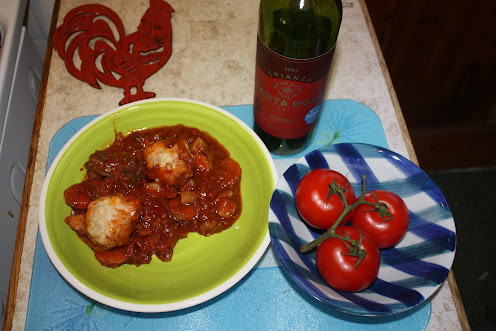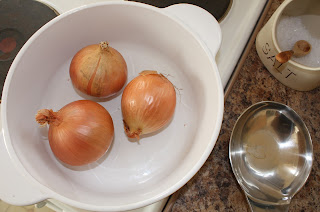Summer in England is jamming time. There is a huge variety of fruits growing wild in the english countryside, not least of all plums, damsons, apples, sloes and the best jamming fruit of all, BlackBerries!
Method (in the Madness)
1. It's very easy ..... collect the Blackberries!
.... but make sure they have many large segments rather than many small segments as these are exceedingly seedy and therefore inedible!
2. Wash thoroughly in a basin of water removing stalks and floating bits!
3. Drain and rinse in a large collander ..........
4. Weigh the fruit and chuck into a large Thick Bottomed jamming pot!
5. Cook the fruit on a Medium Heat until it goes soft, and at this point, check that the fruit is disolving and not forming hard lumps! If it is, it is no good and should be chucked away!
6. Now add the equivalent weight in sugar, the best being sugar with added Pectin as blackberries don't set very well.
7. Bring the jam mixture to a simmer on a Medium Heat stirring occassionally, until the sugar is completely dissolved and then let the beautiful black molasses simmer for about 20 - 30 minutes.
8. In the meanwhile, place your thoroughly washed and dried glass jars and lids into a heated oven set to about 120 degrees Celcius, Farenheit 250 degrees, Gas Mark 1/2.
The jars need to remain in the oven at heat for at least 20 minutes. This is an essential sterilisation process so that the jam can be stored for months or even years, without the fear of mould developing!
9. Begin the potting process with a hot jars and a hot jam mixture. A soup ladle is the best implement for getting the jam into the jars. As soon as the jar is filled screw the lid on tightly using a tea towel so you don't burn yourself.
Note: Jam will get everywhere! Don't panic! It's all part of the fun!
Cook's Tips
- Add a squeeze of lemon juice for an unusual flavour and to improve setting.
- Blackberries don't set well so a number of plums can be cooked with the jam to increase the pectin levels.












